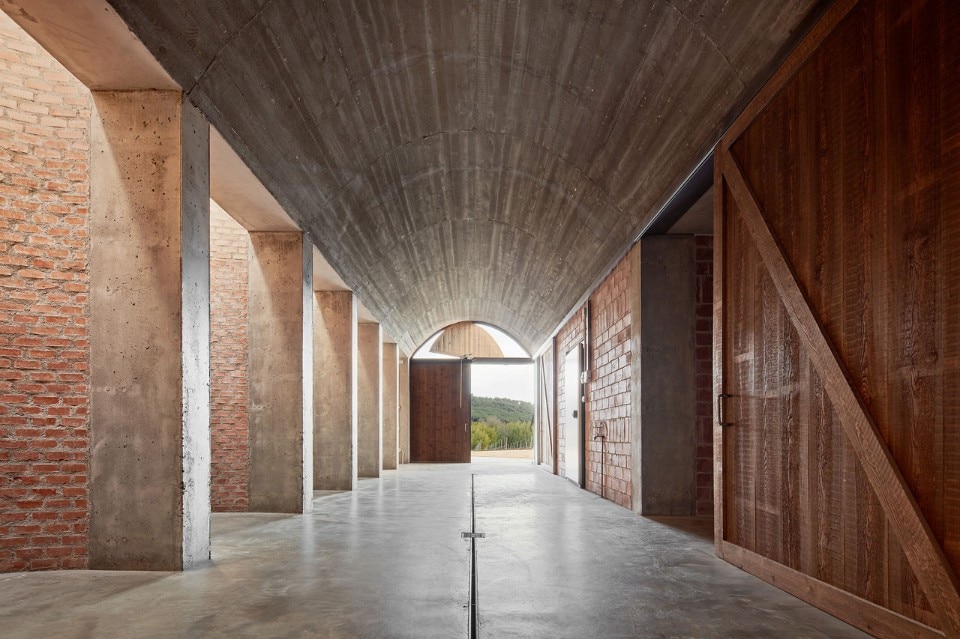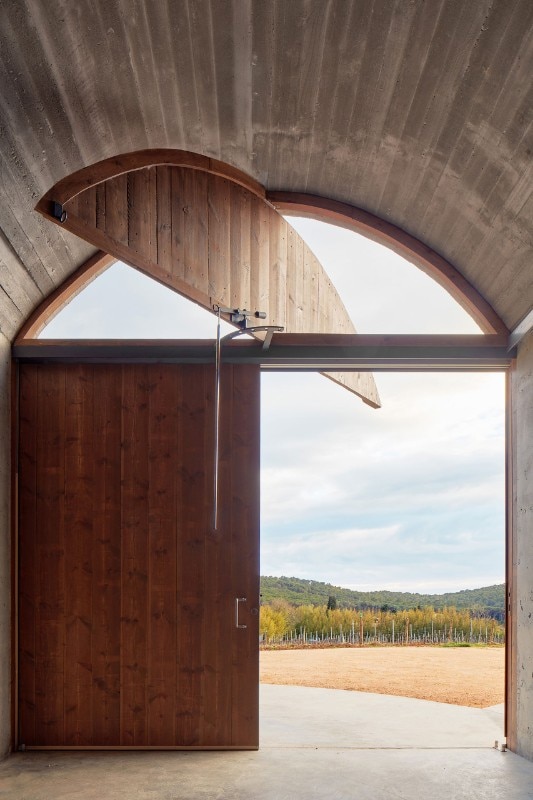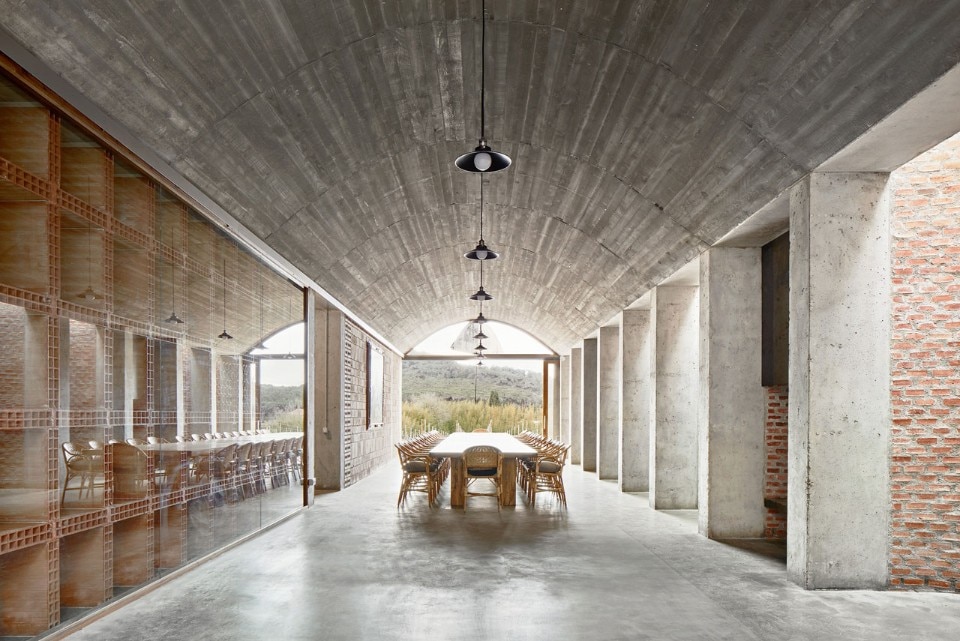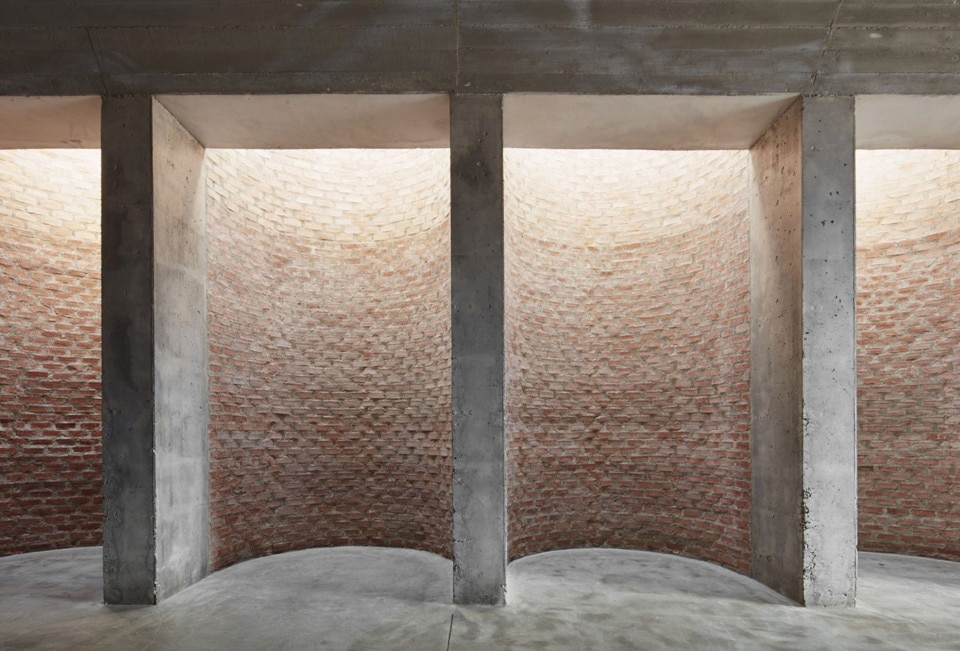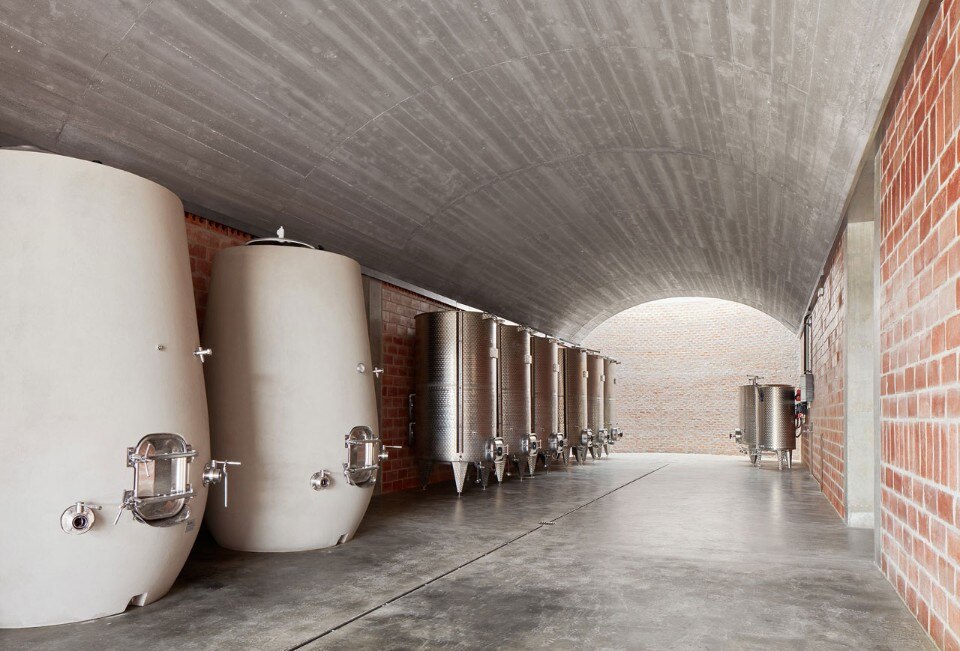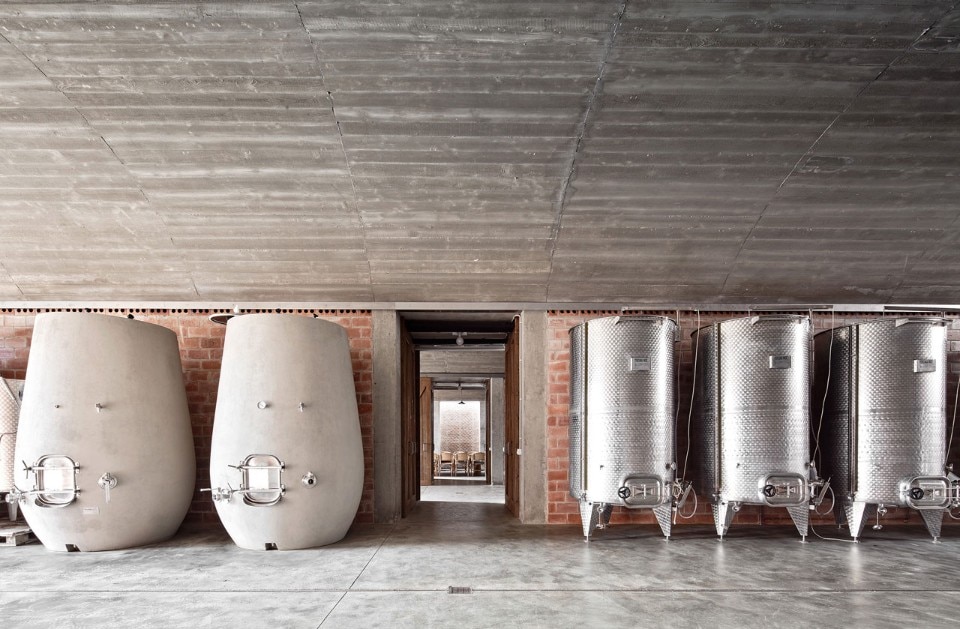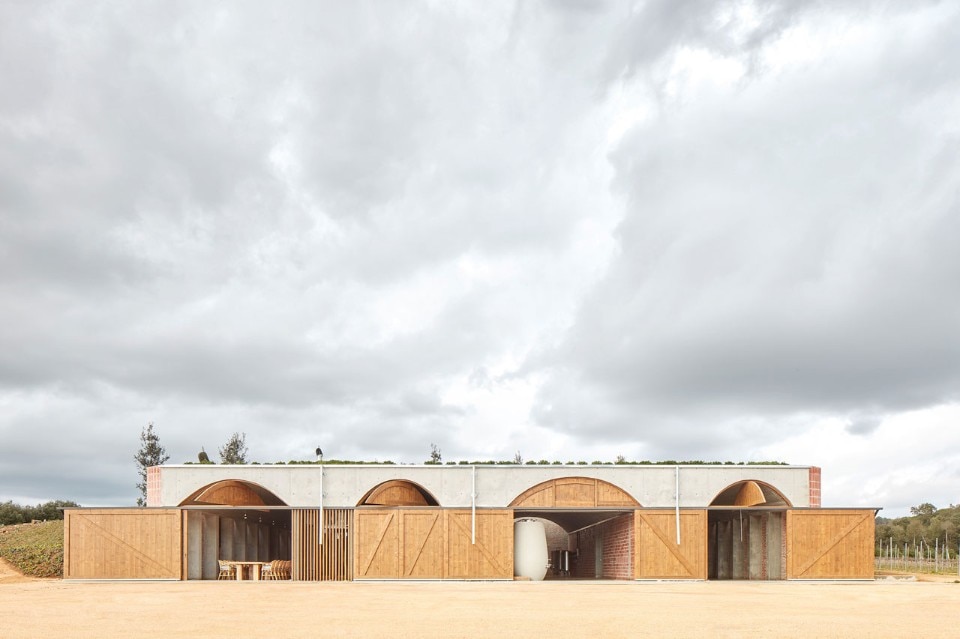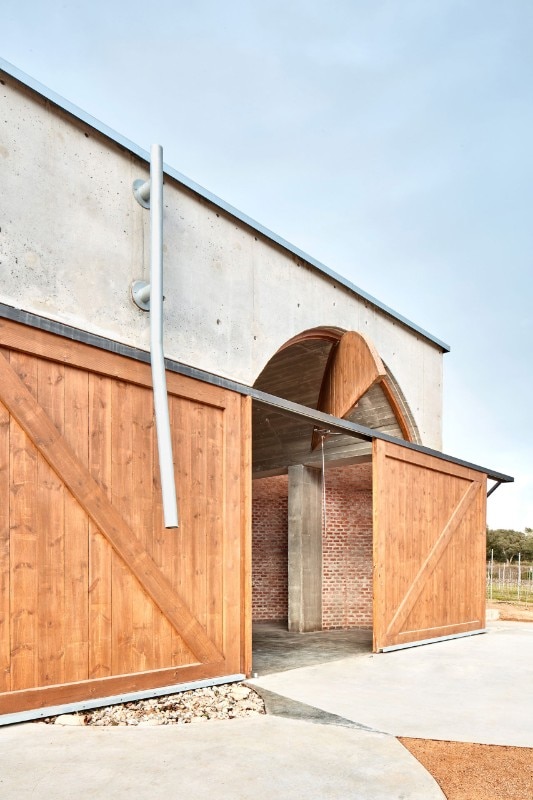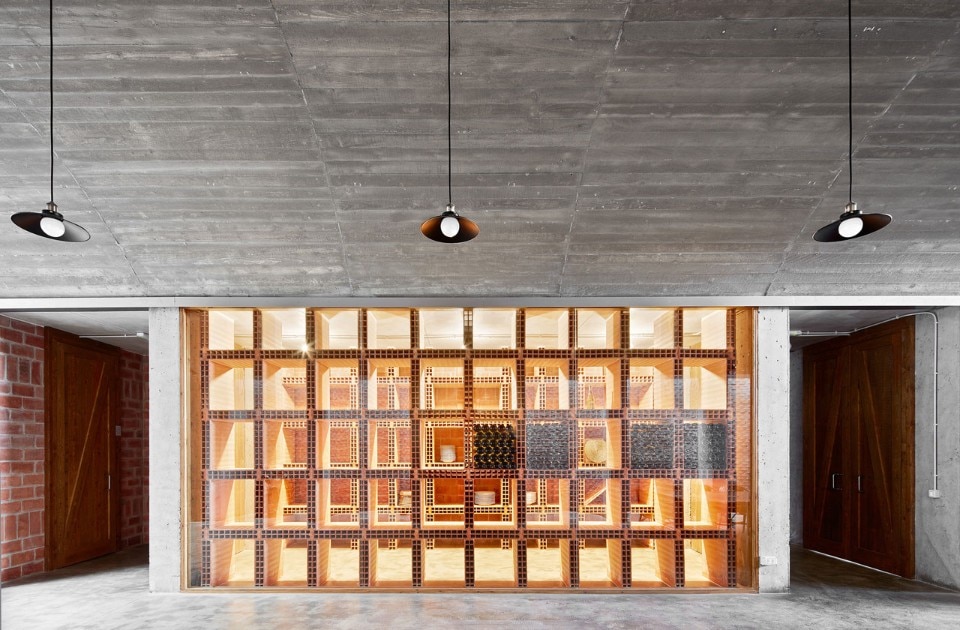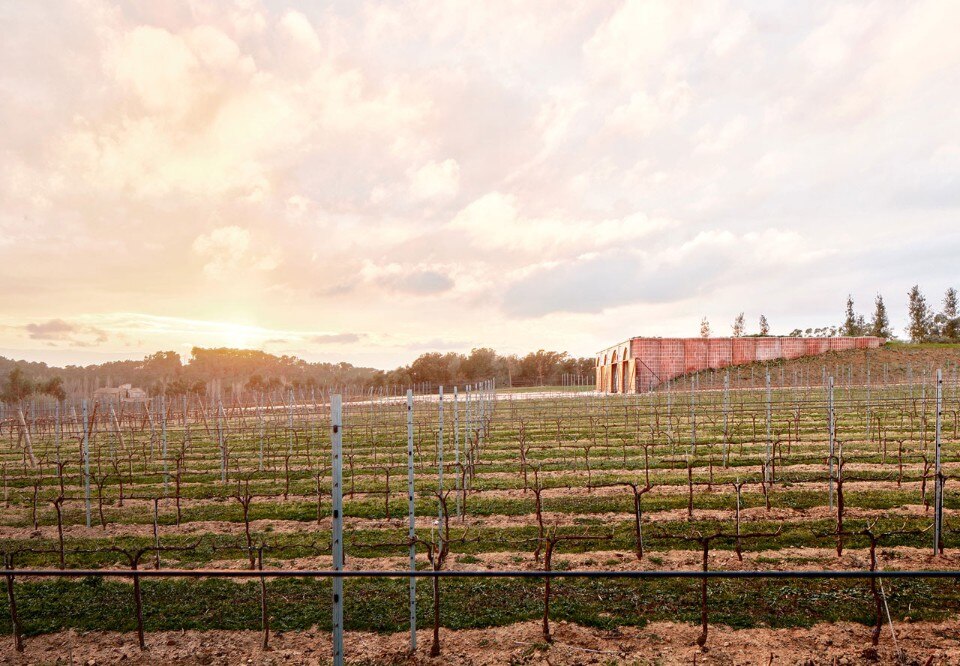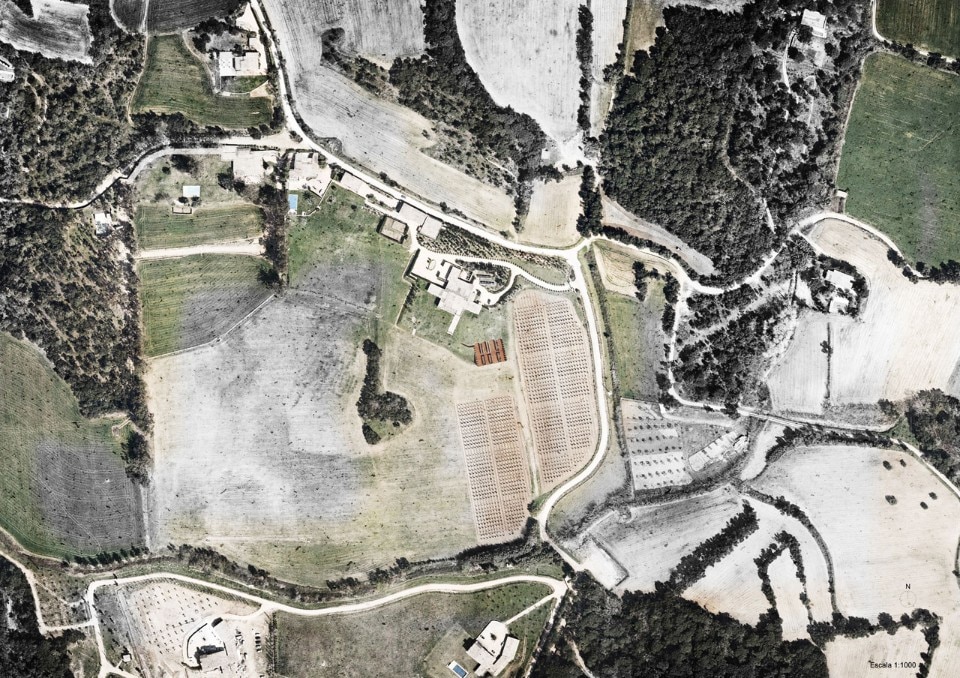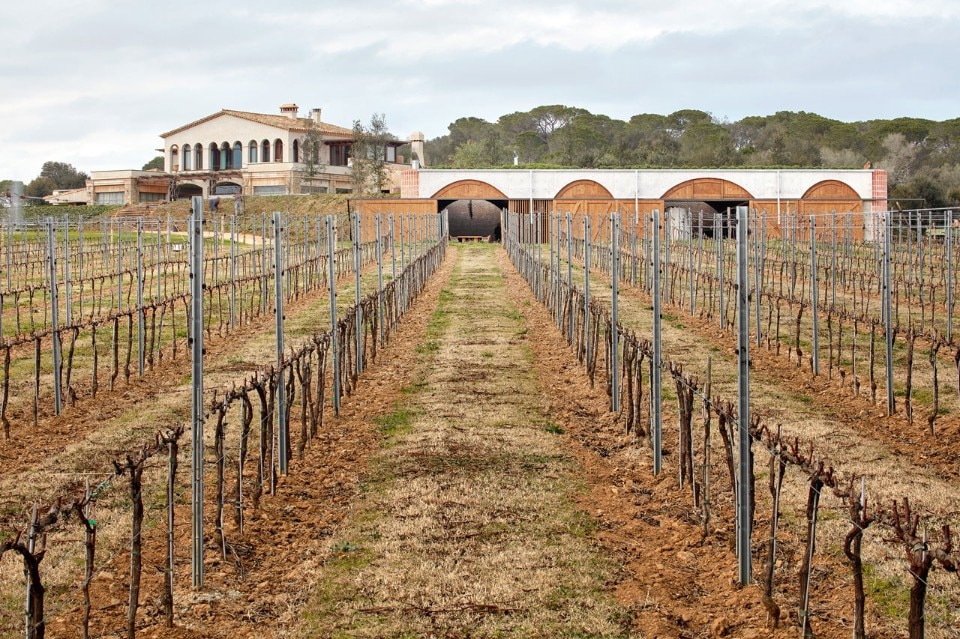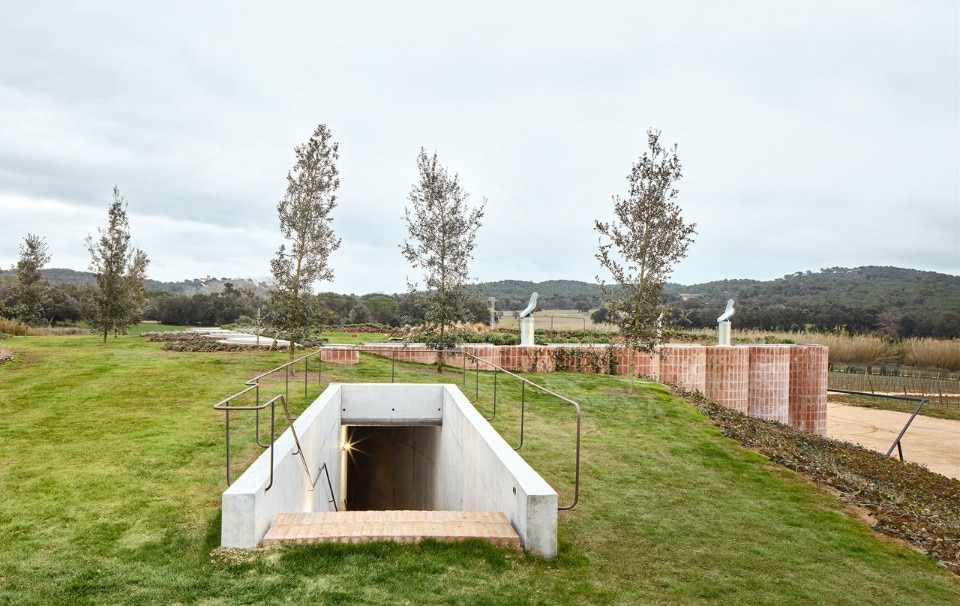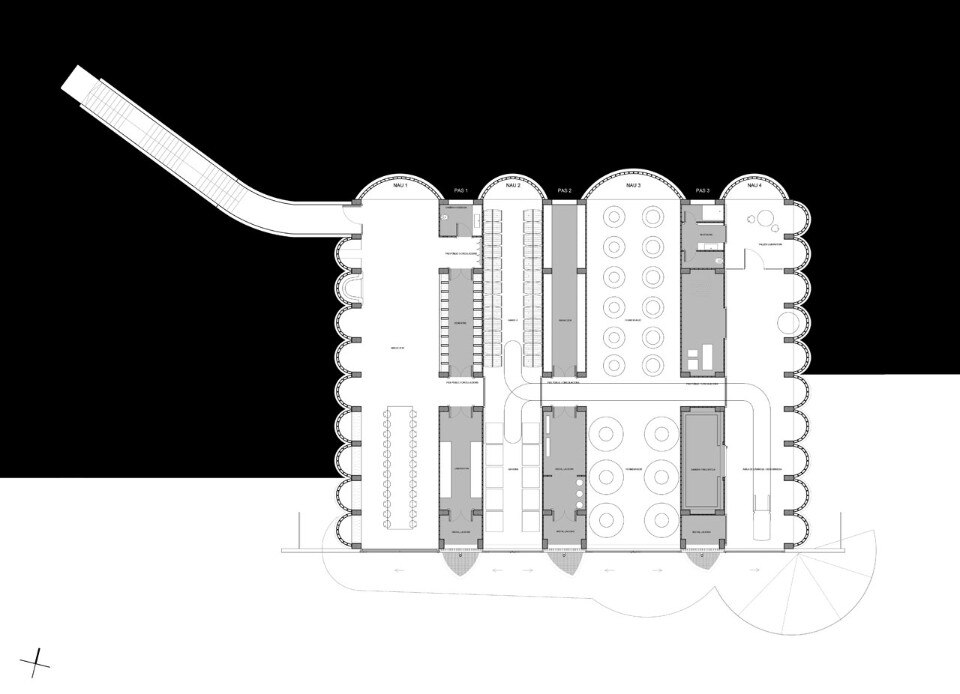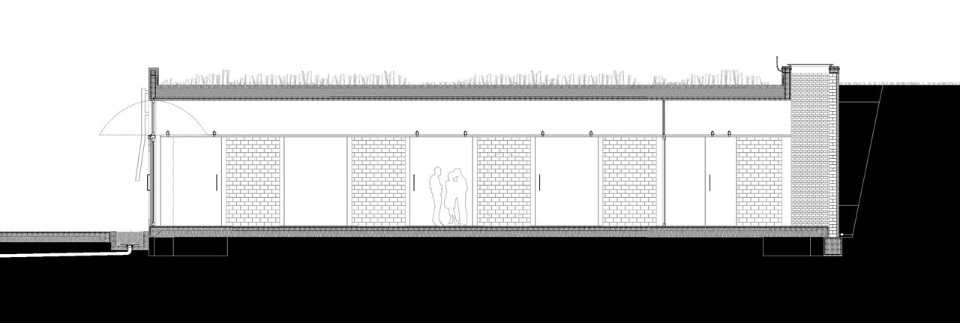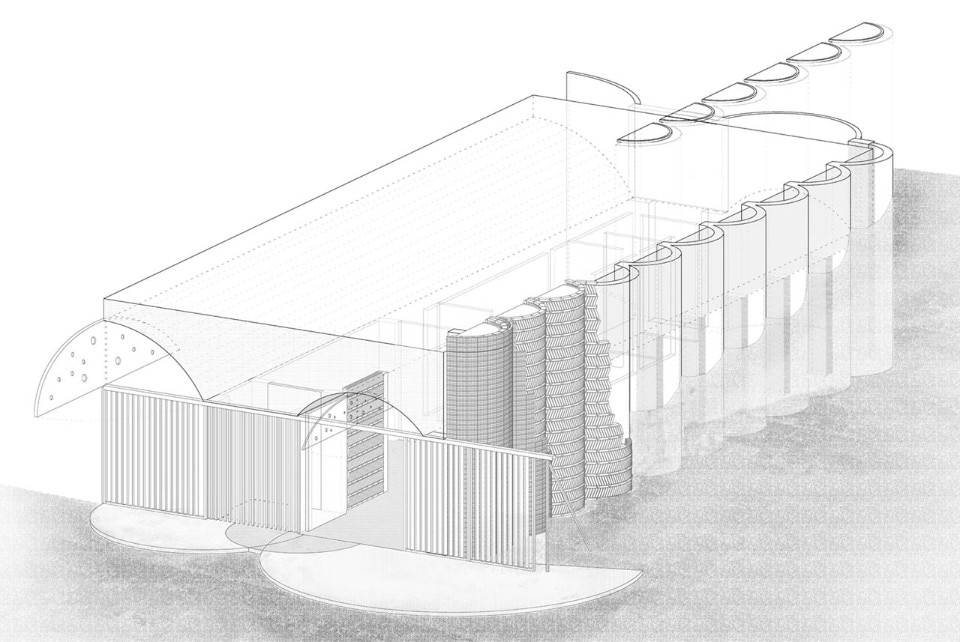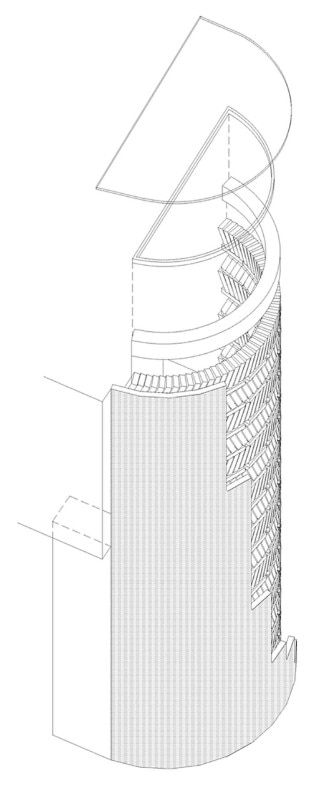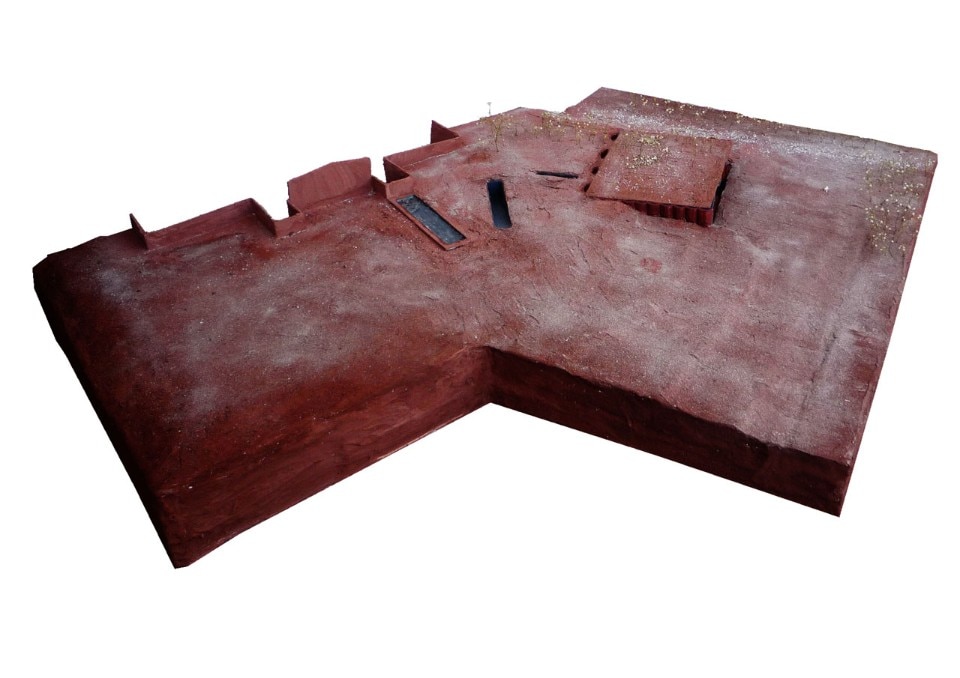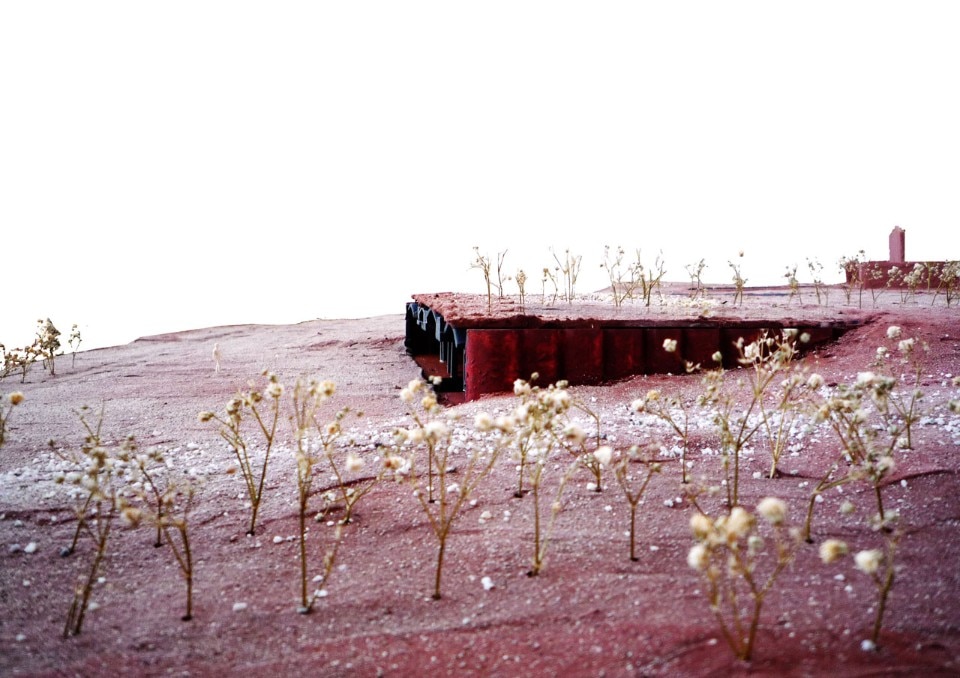The last project by Spanish duo Jorge Vidal and Víctor Rahol, winner of the Tile of Spain Awards 2017 is a winery half nestled in the hills near Girona, Catalonia. The archetypical use of traditional and industrial materials allows the building to adapt to the surroundings and to the time flow.
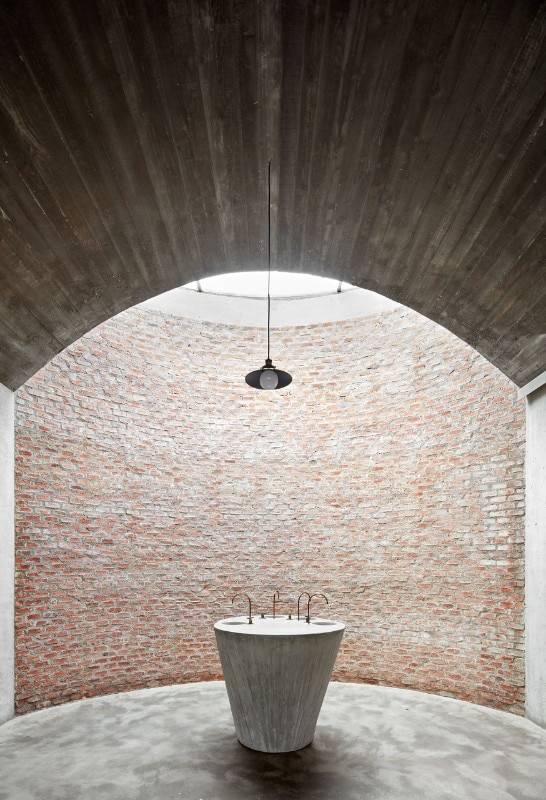
 View gallery
View gallery
The design is developed around four aspects: the functional program, where the winery serves a buffer zone between the wine yards and the main house; the ground’s humidity that helps the preservation of wine; the space depth that absorb sound and allows light to define spaces, from dark to light and vice versa. Finally, the structural functionality, given by a series of naves that release the ground’s weight, a rain collection system and a series of lateral, perpendicular vaults that contrast the ground’s pushing and let the light in.
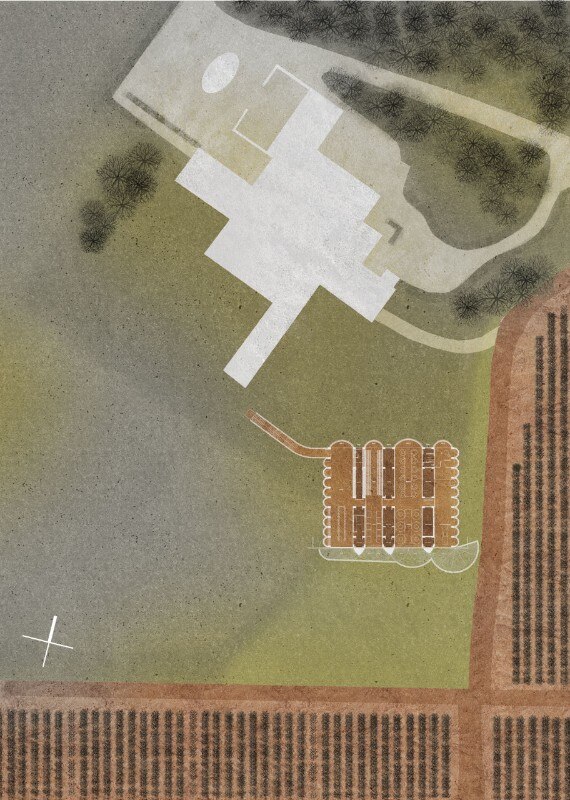
 View gallery
View gallery

\\192.168.0.240\Volume_1\Usuaris\projectes\250-(Bodega Mont-Ras)
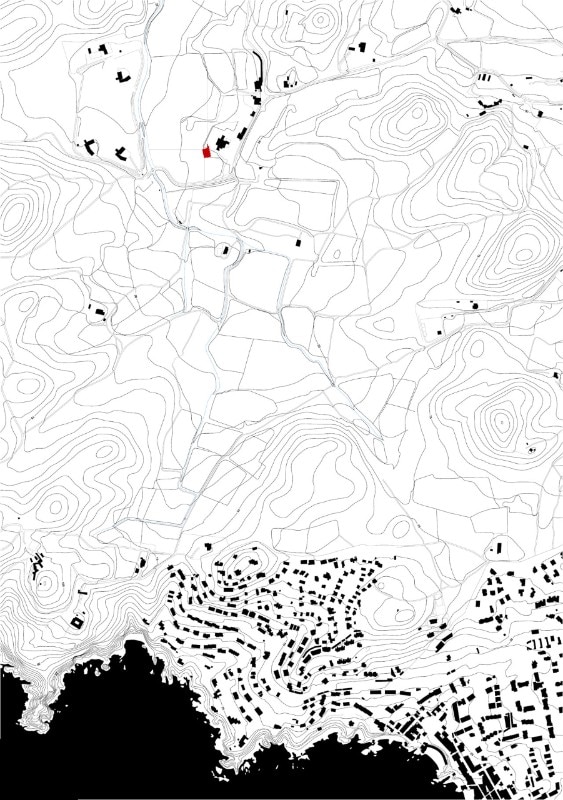
\\192.168.0.240\Volume_1\Usuaris\projectes\250-(Bodega Mont-Ras)\04-Executiu\04-DG_documentaciografica\r- situacio 1-10000 Mode
When you describe it, you talk about amor y cariño (love and care). How was the project born?
VR We like ancient words. Tradition, conservation, sensuality and landscape. Basically the ones that move authentic architecture for their depth, for their tradition. This is the last project that we did together, after collaborating for nine years.
JV This project was born from the understanding of the wine-making experience. It is a product that requires tranquility, patience and a process made of sensations. We believed that the building had to accompany somehow this process in harmony. For this reason we designed very logical building that raises from the ground, from humidity, to create an environment suitable for wine production. The other important aspect was depth, darkness and light. Coming out of the ground, the building is dark at its core and light at its access.

We organized it in four naves. The first one for work, the second one is where the must is generated, the third is where the barrels and wine rests for some time, and the fourth is hosts feasts, when you open a bottle. The winery is directly linked to the main house through an underground tunnel, and it gives continuity between the house and the wine yards. These naves open to the landscape. There is a moment where the building is very closed, like an animal crouched in the ground. Then it opens up and connects to the fields.
Brick is at the base of the constructive system we used. We built a series of perimetral vaults that allow to keep earth’s lateral stresses and let zenithal light in. A concrete structure holds the strength of earth in the underground part of the building. There are vaults made of hyperbolic arcs whose width changes in the service areas that host the technical machines in each nave. The building is also a platform that retains water.
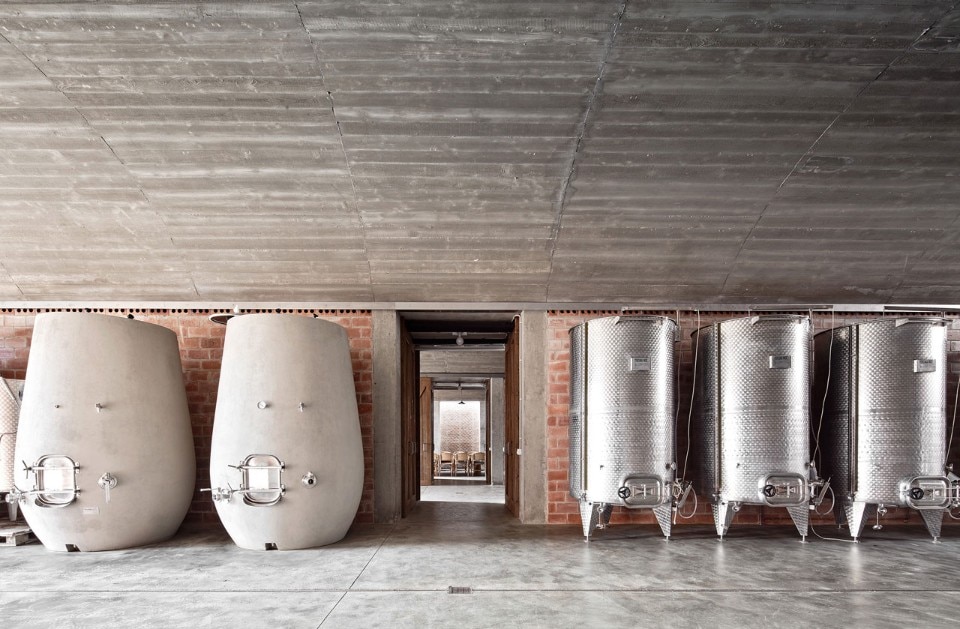
Why brick?
VR For us is an important matter: the interpretation of landscape. On one side you have the specific area of the Baix Empordà, that is one of the most characteristic areas in Catalonia. There is also another fact that gives sensuality that is the hàbit , that in this case is that love affair that Jorge was talking about, the one that offers wine, one of life’s pleasures. Brick is a material that well adapts to construction and cultural traditions. A place where brick is abundant. It offers some features very recognizable in its interiors, let’s say... a Catalan rurality.
That open brick that you can see in malls with fake rural walls. There is a brick tradition that comes from Modernism, that left us very important works of extraordinary sensuality. Just think of Gaudì and a series of people like Puig i Cadafalch, Domènech i Montaner, Josep Pujol... they all worked with brick. We, in particular, were inspired by a containment wall by Puig i Cadafalch that literally seduced us. A project is made of many ‘entrances’: the place’s sensuality, the environmental analysis, the functional program. In this sense Catalan’s brick tradition was fundamental to achieve this underground and humid atmosphere. The naves made sense in this context, since they hold the pressure from above and from the sides.
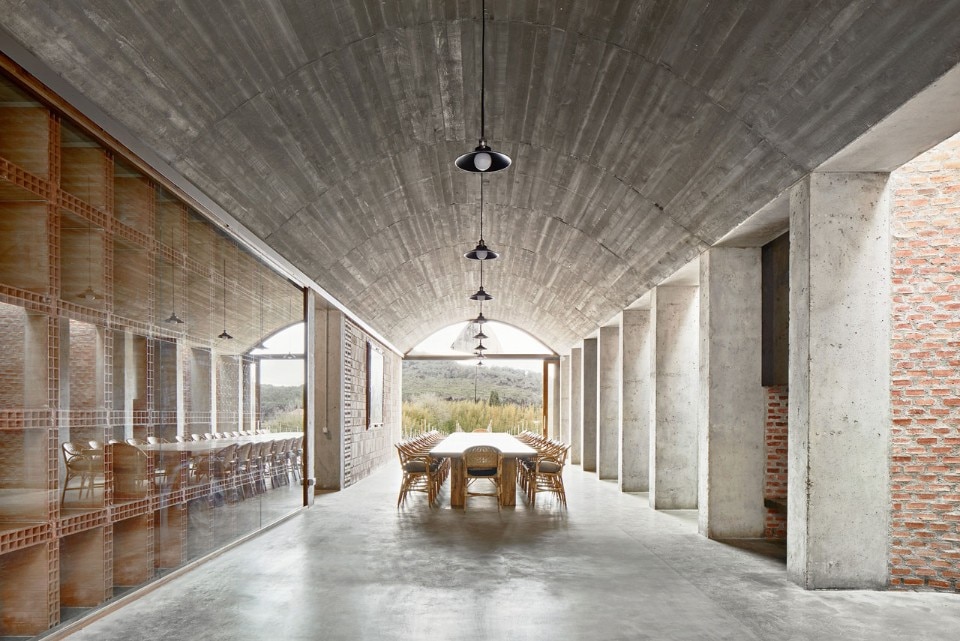
How does this building live today?
JV It is a building without coatings. When all materials are true, and express their own essence, life continues well, they grow old very well. Today the winery is in good shape, it’s getting old in a good way for its material quality. They are what they are, they are what they want, without manipulations. Brick, concrete, wood and metal. It’s a very logical shape that creates its space in earth, like hands that push matter out, to leave room for the body and keep it comfortable.
VR It has something Roman in it. Like those immense thermal baths in bricks. Made only by vaults, curves and light. You might have understood that we are very loving...
- Project:
- Bodega Mont-Ras
- Program:
- Winery
- Architects:
- Jorge Vidal and Víctor Rahola
- Location:
- Girona
- Area:
- 573 sqm
- Structures:
- BAC
- Budgets and mesurments:
- Mario Barredo
- Lanscape:
- Rius&Rius
- Completion:
- 2016


